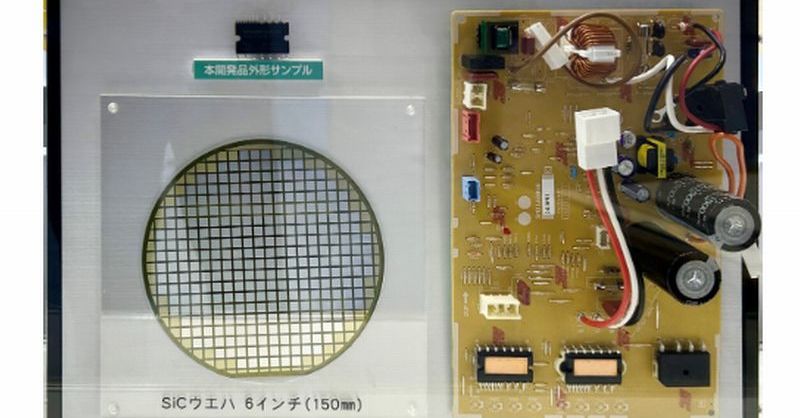Innovative AC Technology: Parallel SiC/Si Chips – A Revolution in Cooling Efficiency
The quest for more efficient and sustainable cooling solutions continues to drive innovation in the electronics industry. A groundbreaking development is emerging: the parallel use of Silicon Carbide (SiC) and Silicon (Si) chips in air conditioning (AC) technology. This innovative approach promises significant improvements in energy efficiency, performance, and overall system lifespan. This article delves into the specifics of this exciting advancement and its implications for the future of cooling.
What are SiC and Si Chips, and Why Combine Them?
Traditional AC systems heavily rely on silicon-based technology. While effective, silicon suffers from limitations in high-power applications. It experiences significant energy losses as heat, leading to lower efficiency and higher energy consumption.
-
Silicon (Si): The workhorse of semiconductor technology, silicon is abundant and relatively inexpensive. However, its inherent limitations at high voltages and temperatures restrict its efficiency in power electronics.
-
Silicon Carbide (SiC): A wide-bandgap semiconductor, SiC offers superior properties compared to silicon. It can handle higher voltages and temperatures with significantly lower energy losses. This translates to greater efficiency and reduced heat generation.
The parallel use of SiC and Si chips leverages the strengths of both materials. SiC handles the high-voltage, high-power switching stages, while Si manages the lower-voltage control and signal processing aspects. This synergistic approach minimizes energy losses and maximizes the overall system's performance.
Key Benefits of Parallel SiC/Si AC Technology:
- Increased Efficiency: By reducing switching losses, this technology significantly boosts the energy efficiency of AC units. This means lower electricity bills and a smaller carbon footprint.
- Improved Power Density: The higher power-handling capacity of SiC allows for smaller and more compact AC units, making them ideal for various applications.
- Enhanced Reliability and Lifespan: The superior thermal performance of SiC reduces stress on components, resulting in increased system reliability and longevity.
- Faster Response Times: SiC's faster switching speeds enable quicker and more precise temperature control, optimizing comfort and energy savings.
- Reduced Electromagnetic Interference (EMI): SiC's inherent properties contribute to lower EMI, improving overall system stability.
The Future of Cooling: Market Implications and Challenges
The adoption of parallel SiC/Si technology in AC systems holds significant potential to revolutionize the cooling industry. We can expect:
- Higher Market Demand: As consumers become more environmentally conscious and seek energy-efficient solutions, the demand for SiC-based AC systems will likely increase.
- Increased Competition and Innovation: This technological leap will spur competition among manufacturers, driving further innovation and cost reductions.
- Sustainable Cooling Solutions: The higher efficiency of SiC-based AC systems aligns perfectly with the global push towards sustainable and green technologies.
However, challenges remain:
- Higher Initial Costs: Currently, SiC chips are more expensive than silicon chips. This can make the initial investment for manufacturers higher.
- Supply Chain Constraints: The production of SiC chips is still relatively limited compared to silicon. Addressing supply chain challenges is crucial for widespread adoption.
- Technical Expertise: Designing and manufacturing systems utilizing SiC requires specialized knowledge and expertise.
Conclusion: A Promising Path Towards Sustainable Cooling
Parallel SiC/Si chip technology represents a significant advancement in air conditioning technology. While challenges exist, the potential benefits—increased efficiency, enhanced reliability, and reduced environmental impact—make it a promising path towards a more sustainable and comfortable future. As production scales and costs decrease, we can anticipate a widespread adoption of this revolutionary technology, transforming how we cool our homes and spaces.
Keywords: SiC, Silicon Carbide, Si, Silicon, AC technology, Air Conditioning, Energy Efficiency, Sustainable Cooling, Power Electronics, Wide-Bandgap Semiconductor, Cooling Technology, Green Technology, Innovative Technology, High-Efficiency AC, Next-Generation AC
(Optional) Call to Action: Stay tuned for further updates on the latest advancements in sustainable cooling technologies by subscribing to our newsletter or following us on social media.
